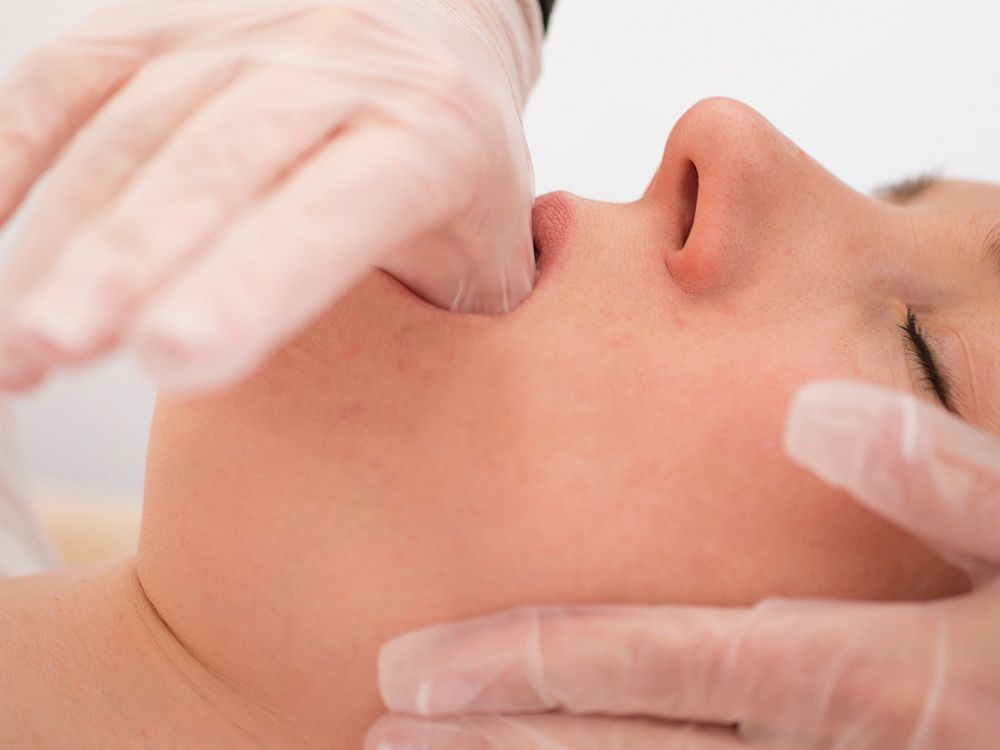Unveil the secret to natural beauty hidden beneath the surface—the shape of your skull, particularly the upper jaw. Learn how proper tongue position plays a vital role in shaping the harmonious alignment of facial bones, impacting the standards of beauty encoded in our brains, nervous systems, and hormones. Discover how this subtle yet powerful factor can enhance your natural aesthetics and overall facial balance.
Table of Contents
A Quick Test: Where Does Your Tongue Rest?
Take a moment to observe where your tongue naturally rests.
- 👅 At the top of the palate
- 👅 In the middle, in an interdental position
- 👅 At the bottom of the oral cavity
The correct, physiological resting position of the tongue is at the top of the palate, with the tip just behind the upper teeth on the palatine tubercle. The tongue’s “body” should also make contact with the upper palate.
Try This Experiment:
- Take a profile photo of your face when your tongue hangs loosely in your mouth or rests against the lower jaw.
- Take another photo with your tongue pressed firmly, with slight suction, against the upper palate.
Notice the difference?
In the quest for beauty and youth, we often overlook the root causes of facial changes. While cosmetologists offer injections and surgeons provide facelifts, few acknowledge that something as simple as tongue position affects facial aesthetics.
The Impact of Tongue Position on Facial Structure
1. The Benefits of the Correct Tongue Position
When the tongue is properly positioned at the roof of the mouth, it acts as a powerful muscular organ, exerting upward pressure on the palatine process of the upper jaw. This encourages horizontal development of the face.
- Enhances facial harmony: Proper tongue pressure influences the size, shape, and orientation of the nose, eyes, skull, palate, and teeth.
- Creates a balanced appearance: It contributes to the “horizontally developed” face often associated with actors, models, and other objectively beautiful individuals. This includes prominent cheekbones, well-positioned eyes, and a natural smile.
2. The Consequences of an Incorrect Tongue Position
If the tongue rests in the lower part of the mouth, the upper jaw may drop and move backwards. This leads to:
- A “retracted” or “slanted” chin: Resulting in a vertically elongated face.
- Age-related changes: As bone volume decreases, tissues sag, forming jowls and a double chin.
What Can You Do?
- Consciously Monitor Your Tongue Position. Throughout the day, ensure the back of your tongue is pressed against the upper palate, particularly when swallowing. Proper swallowing should involve no movement of the lips, cheeks, chin, or neck—only a slight motion near the thyroid gland.
- Try Myofascial Face Massage. Unlike traditional massages that target the skin’s surface, the Myofascial face massage technique delves deeper, focusing on the fascia – the connective tissue situated between muscles.

- Explore the Mewing Technique. Dr. Mike Mew, a British orthodontist, known for his work in dental alignment and facial enhancement, developed the concept of horizontal facial development through proper tongue posture. He is the founder of the “mewing” technique.
When it comes to enhancing facial aesthetics
When it comes to enhancing facial aesthetics, myofascial face massage can be an excellent complement to proper tongue posture. This technique focuses on releasing tension in the muscles and fascia of the face, improving blood flow, and promoting natural facial symmetry.
Regularly massaging the facial muscles can help to:
- Relieve tension: Releasing tightness in areas such as the jaw, cheeks, and forehead allows for better alignment and support of underlying structures.
- Improve circulation: Stimulating blood flow can rejuvenate skin and tissues, giving a more youthful and vibrant appearance.
- Encourage lymphatic drainage: Reducing puffiness and bloating helps contour the face naturally.
Support jaw and tongue posture: Relaxed muscles enhance the effectiveness of techniques like Mewing, as they reduce strain caused by muscle imbalances.
Integrating myofascial face massage into your routine doesn’t require professional tools—gentle, intentional movements with your hands can work wonders. Combine this with consistent Tongue Position training to maximise results, achieving a naturally harmonious and youthful look.
References:
- Proffit, W. R., Fields, H. W., & Sarver, D. M. (2013). Contemporary Orthodontics (5th ed.). Mosby.
- Singh, G. D. (2004). Craniofacial Growth and Development.
- Harvati, K., & Harrison, T. (2006). Neanderthals Revisited: New Approaches and Perspectives.
- James Nestor (2020) Breath: The New Science of a Lost Art
- Naini, F. B. (2011). Facial Aesthetics: Concepts and Clinical Diagnosis.
- Moss, M. L., & Salentijn, L. (1969). “The primary role of functional matrices in facial growth.” The American Journal of Orthodontics
- Lee, R. T. (1999). “The role of soft tissues in the control of craniofacial growth.” The European Journal of Orthodontics
- Wu, J., & Ghesquiere, J. (2013). “Facial attractiveness and its relation to symmetry and proportionality.” Acta Biomaterialia.
- Mew, M. (2014). Orthotropics and Facial Development: An Introduction to the Concepts.
- Guimond, A., & Melvin, C. (2015). “Functional orthopedics and aesthetics: The role of tongue posture in facial growth.” Journal of Functional Dentistry.
- Rickets, R. M. (1982). “The influence of orthodontics on facial form and esthetics.” Dental Clinics of North America.